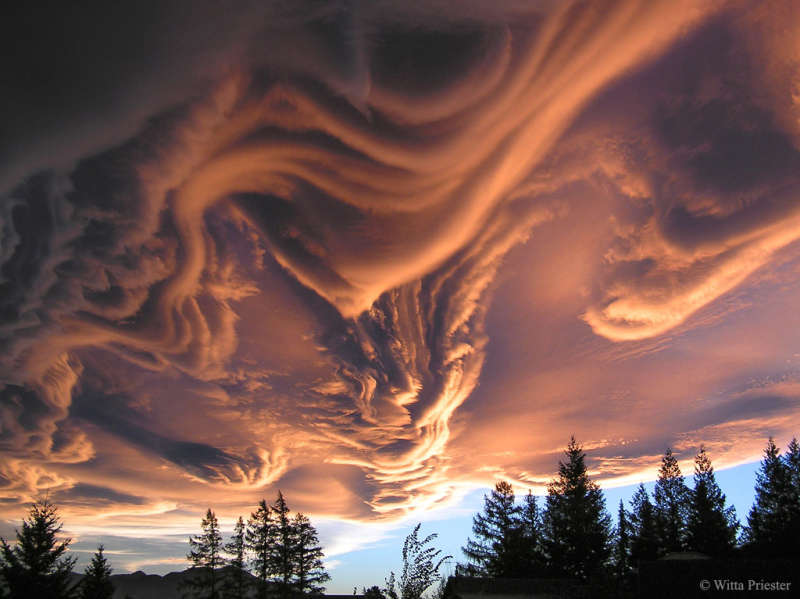
|
Credit & Copyright: Witta Priester
Explanation:
What kind of clouds are these?
Although their cause is presently unknown, such unusual atmospheric structures,
as menacing as they might seem, do not appear to be harbingers of
meteorological doom.
Formally recognized as a distinct
cloud type only last year,
Asperitas
clouds can be stunning in appearance, unusual in occurrence, and are relatively unstudied.
Whereas most low cloud decks are
flat bottomed,
asperitas clouds appear to have significant vertical structure underneath.
Speculation therefore holds that
asperitas
clouds might be related to
lenticular clouds that form near mountains,
or mammatus clouds associated with thunderstorms,
or perhaps a foehn wind --
a type of dry downward wind that flows off mountains.
Such a wind
called the
Canterbury arch
streams toward the east coast of New Zealand's
South Island.
The featured
image, taken above
Hanmer Springs in
Canterbury,
New Zealand, in 2005,
shows great detail partly because sunlight illuminates the undulating
clouds
from the side.
|
January February March April May June July August September October November December |
| ||||||||||||||||||||||||||||||||||||||||||||||||
NASA Web Site Statements, Warnings, and Disclaimers
NASA Official: Jay Norris. Specific rights apply.
A service of: LHEA at NASA / GSFC
& Michigan Tech. U.
Based on Astronomy Picture
Of the Day
Publications with keywords: clouds
Publications with words: clouds
See also:
- APOD: 2025 August 17 Á Asperitas Clouds Over New Zealand
- Nacreous Clouds over Sweden
- APOD: 2024 November 19 Á Undulatus Clouds over Las Campanas Observatory
- APOD: 2024 July 7 Á Iridescent Clouds over Sweden
- APOD: 2023 August 20 Á A Roll Cloud Over Wisconsin
- APOD: 2023 February 12 Á Mammatus Clouds over Nebraska
- Nacreous Clouds over Lapland
